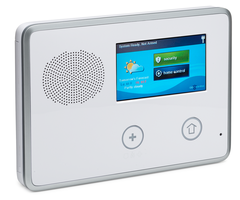How Does RF Supervision Loss Work On a 2GIG System?
RF supervision loss on a 2GIG System works by requiring all programmed wireless sensors to check-in at least once every 140 minutes. As long as your wireless sensors are working properly and remain powered on and within wireless range of the panel, then RF supervision loss should not occur.

The same RF supervision rules apply to a 2GIG GC2, 2GIG GC2e, 2GIG GC3, and 2GIG GC3e. On these systems, any wireless sensor that fails to check-in at least once every 140 minutes (2 hours 20 minutes) will have an RF supervision loss condition displayed for that zone. All 2GIG Systems can support both 2GIG 345 MHz Sensors and Honeywell 5800 Series Sensors. Additionally, the GC2e and GC3e Systems can support the encrypted 2GIG eSeries Sensors.
All 2GIG 345 MHz Sensors send check-in signals every 70 minutes. All Honeywell 5800 Sensors send check-in signals every 70 to 90 minutes on a randomized basis. And the encrypted 2GIG eSeries Sensors follow the same rules as the standard 2GIG 345 MHz Sensors by sending check-in signals every 70 minutes. Since RF supervision loss will not occur unless no check-in is received for 140 minutes, your system should never experience an RF supervision loss condition if your sensors are working properly.
The most common reasons for RF supervision loss to occur are due to sensors powering down due to dead batteries and sensors being taken out of RF transmission range. If you see a low-battery condition for a sensor, then you should replace the battery as soon as possible so that RF supervision loss does not occur. Additionally, keep in mind that the wireless range for 2GIG 345 MHz Sensors and 2GIG eSeries Sensors is about 350 feet in open air. Meanwhile, the wireless range for a Honeywell 5800 Sensor is about 200 feet in open air. Remember that thick walls and large metal obstacles can reduce wireless range.
It is also important to understand that some RF supervision issues occur because of environmental changes. By that we mean that new additions to your home or business could be preventing your wireless sensors from checking-in properly. This could be a large metal appliance like a stove or refrigerator, some new walls that you have put up, or even something like a large mirror. If you recently made some environmental changes and just started experiencing RF supervision issues, be aware that that may be the cause.
In the event that you experience an RF supervision loss condition, you should make sure the associated sensor is powered on and within wireless range of the system. Then wait at least 90 minutes for the sensor to send a check-in signal to the panel. The RF supervision loss condition should automatically clear from the 2GIG System once the sensor successfully checks-in. You may also force the sensor to transmit a signal to the panel either by faulting and restoring (intrusion sensors) or by pressing its test button (life-safety sensors). Remember to put your system on test mode before pressing the test button on a life-safety sensor. You should not have to manually clear the trouble condition from the panel. If you find that the RF supervision loss condition will not clear, try deleting the sensor from programming and re-enrolling it through auto-enrollment. This will allow you to make sure that the sensor is communicating with the system successfully. If you cannot auto-enroll the sensor, then it is likely out of range or damaged.
Did you find this answer useful?
We offer alarm monitoring as low as $10 / month
Click Here to Learn MoreRelated Products
Related Categories
- Answered




